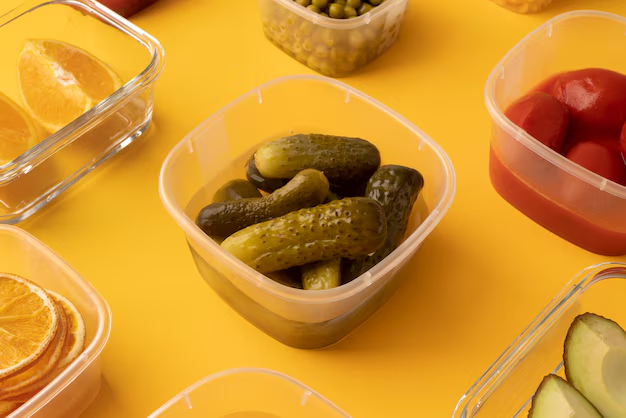Keeping Worms Happy and Alive in Your Refrigerator: A Complete Guide
When you’ve invested in worms for fishing, gardening, or composting, you want them to stay alive and thriving until they fulfill their purpose. While it might seem odd to keep your worms in the refrigerator, this chilled storage method can actually provide a safe environment that prolongs their shelf life. Here, we’ll delve into how to maintain your worms in top-notch condition while stored in the fridge, and explore some related tips and tricks to ensure they remain active and healthy.
🪱 Why Store Worms in the Refrigerator?
Storing worms in the refrigerator might initially seem counterintuitive, yet it offers functional benefits:
- Temperature Control: The cooler temperature slows down the worms' metabolism, reducing their activity and extending their lifespan in storage.
- Moisture Retention: Refrigerators help maintain the humidity required to keep worms from drying out.
- Safe Haven: Refrigerators protect worms from predators and environmental variables that can impact their health outside.
Choosing the Right Worms
Not all worms are created equal when it comes to refrigeration. Here’s a look at some popular worms and how well they fare in the fridge:
- Nightcrawlers: These are popular for fishing and can withstand colder temperatures.
- Red Wigglers: Often used for composting, they thrive at room temperature but can tolerate the refrigerator for short periods.
- Mealworms: Generally kept at cooler temperatures to prolong their pupal stage until needed for feeding pets.
🐛 Getting Started with Storing Worms in the Fridge
The Ideal Environment
Creating the perfect habitat for worms in your refrigerator involves a few critical components:
- Temperature: Keep worms at a consistent temperature, ideally around 40°F (4°C). Lower temperatures may harm them, while higher ones can increase their activity, leading to quicker depletion of energy and resources.
- Ventilated Container: Worms require oxygen, so using a container with small holes for air provides them with the necessary ventilation while preventing escape.
- Bedding: Use a good substrate like peat moss, coconut coir, or damp newspaper. Avoid materials that decompose quickly, as they can create heat and negatively affect the worms.
Preparing the Bedding
Start with moist bedding that mimics their natural habitat, but no dripping excess water. It’s crucial for maintaining the worms’ hydration without drowning them. When setting up bedding:
- Moisten Moderately: Achieve just the right moisture level where bedding feels like a wrung-out sponge.
- Add Soil: A thin layer of soil can provide beneficial microbes and minerals.
Feeding Your Refrigerated Worms
While in a state of lowered metabolic activity, worms will need less food.
- Limited Feeding: Offer small pieces of food such as apple cores, carrot tops, and other vegetable scraps.
- Monitor Waste: Remove any uneaten or rotting food to prevent mold growth or unwelcome odors.
🌿 Addressing Common Issues
Maintaining Moisture
Refrigerator air can become dry, leading to desiccation. Check the moisture level regularly to ensure your worms remain hydrated.
- Signs of Dehydration: Look for shriveled or dry worms, and if noticed, gently rehydrate the bedding.
- Avoid Overwatering: Too much moisture can be just as harmful as too little, leading to suffocation.
Managing Odor
Even well-maintained worms can occasionally cause an odor which no one wants permeating their fridge:
- Remove Rotting Matter: Check frequently for decomposing food, which should be promptly removed.
- Change Bedding: If the bedding becomes sour-smelling, replace it with fresh materials.
Coping with Escape Artists
Some worms are notorious for escaping their containers if conditions aren’t quite right:
- Adequate Covering: Make sure lids are secure and air holes are not too large.
- Monitor Environment: Check for overcrowding or incorrect temperatures that might cause worms to wander.
🌟 Quick Tips for Success
Here’s a handy list highlighting key points for keeping your worms alive in the refrigerator:
- 🧊 Maintain Temperature: Keep worm habitat at a consistent 40°F (4°C).
- 💧 Manage Moisture: Ensure bedding is moist but not wet, like a wrung-out sponge.
- 🍼 Feed Sparingly: Offer small amounts of food periodically, mindful of spoilage.
- 🚫 Prevent Escapes: Secure lids properly with adequate ventilation and monitor frequently.
- 🚿 Change Bedding When Necessary: Fresh bedding and occasional cleaning keep worms healthy and odor-free.
🌿 Beyond the Refrigerator: Long-term Worm Care
Stored worms are often not just for immediate use. Understanding how to transition worms back into more active environments when needed is also key:
Returning Worms to Compost or Natural Habitats
- Gradually Increase Temperature: Move containers to a slightly warmer area before fully reintroducing them to an outdoor or compost setup.
- Rehydrate Slowly: If transitioning to compost, add moistened soil gradually to re-acclimate worms.
Using Worms for Fishing
- Keep Cool Until Use: On fishing trips, take along a cooler, maintaining fridge-like temperatures to keep your bait lively and enticing.
- Natural Movement: Allow worms a short period at room temperature before using them directly for bait to restore natural movement.
🏡 Sustainable Practices with Worm Storage
Engaging in worm storage connects naturally to broader sustainable practices like composting and minimizing waste, benefiting both your gardening and eco-friendly efforts:
- Composting Enhancements: Use worm castings as a nutrient-rich soil amendment, perfect for enhancing garden yields.
- Minimal Waste: By keeping worms healthy, minimize unnecessary spoilage or purchases.
Incorporating sustainable habits enriches both environmental stewardship and personal gardening successes, allowing you to not only keep your worms alive but ensure they serve their maximum potential.
🌟 Wrapping Up
Whether you're an avid angler or a compost enthusiast, keeping worms alive in the refrigerator ensures they are always ready for action. Through careful attention to the storage environment, maintaining proper moisture, and minimizing waste, you can keep your worms healthy and thriving while also contributing to eco-friendly practices. Remember, success with worm storage is just as much about keen observation and adaptation as it is about creating the right conditions from the start.
